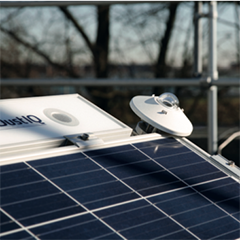PES was interested to find out from Donald van Velsen, Product Manager at Kipp & Zonen, about the latest developments and feedback on their DustIQ. We also wanted to learn if the recent changes, following the merger with the Meteorology division of OTT HydroMet, would make any difference to their solutions. Read on to find out what he had to say…
PES: Hi Donald, it’s a pleasure to talk with you. As you know we have been following Kipp & Zonen for some years now and are regular participants in PES Solar/PV. As always, we have some new readers, so, could you give us a brief overview of your company to bring them up to date?
Donald van Velsen: It’s good to be here. Although we are still Kipp & Zonen, the leading manufacturer of solar irradiance sensors, we are now part of the Meteorology division of OTT HydroMet.
This will enable us to develop our solutions and integrate compact weather stations, from Lufft for example. Together we can offer high quality instruments to measure all weather parameters that influence the performance of a solar energy plant.
PES: Is your work mainly in the solar/PV industry, in your opinion is it an expanding market or has it reached its peak?
DvV: By far the biggest portion of Kipp & Zonen revenue is generated through instruments for the solar industry and this is still growing year after year. Recent reports on planned PV installations, still show growth for at least the next 5 years. The growth might be a bit slower than what we have become used to.
PES: How is this impacting upon your business?
DvV: Growth in PV installations means growth for Kipp & Zonen, when it comes to instruments to measure solar radiation and soiling. On every solar park it is an absolute must to measure solar irradiation, as it is the start of any Performance Ratio (PR) calculation that needs to be performed and reported.
Adding soiling measurement to this, turns the unknown influence of soiling into a known value, thereby increasing the accuracy of the complex PR calculation.




























